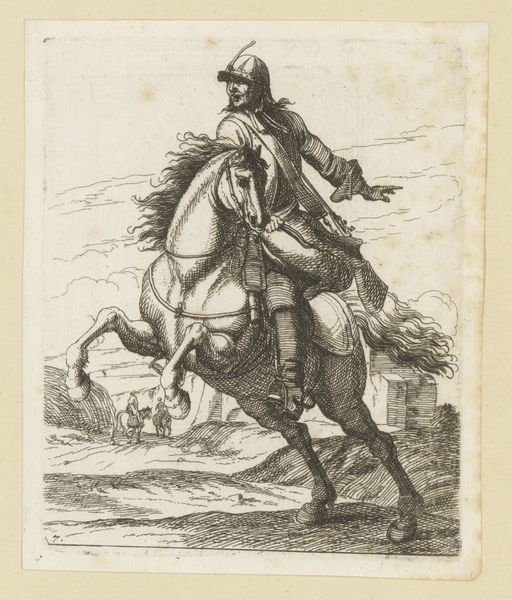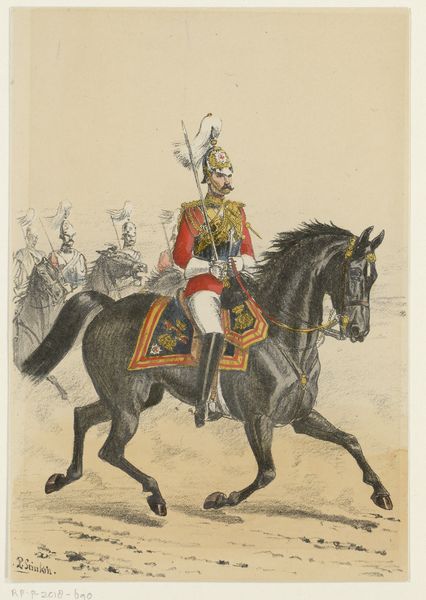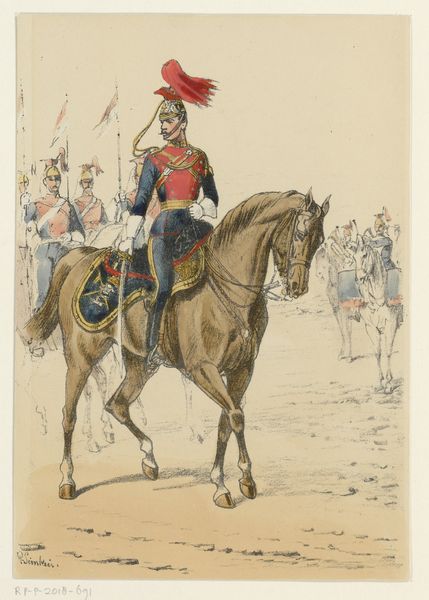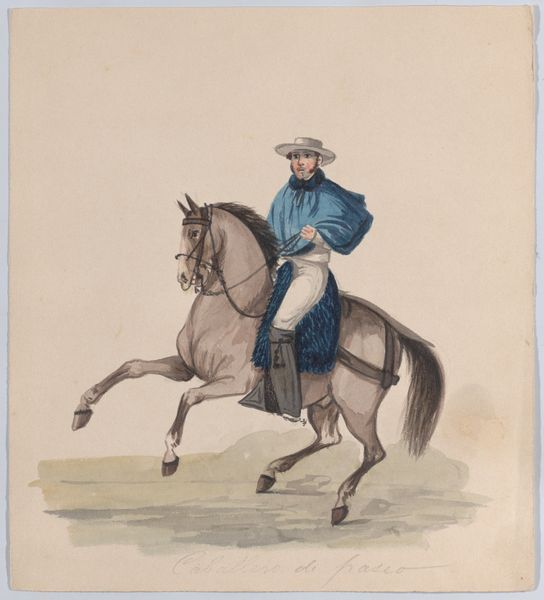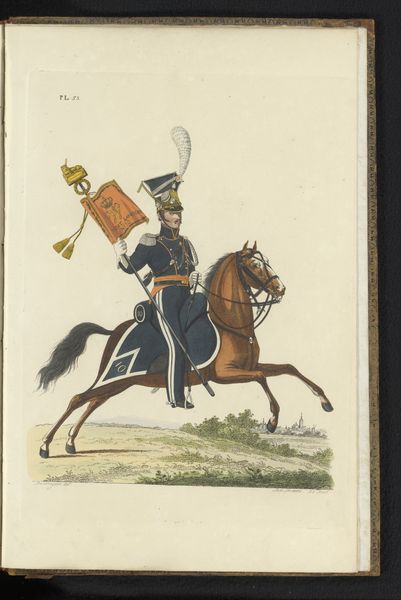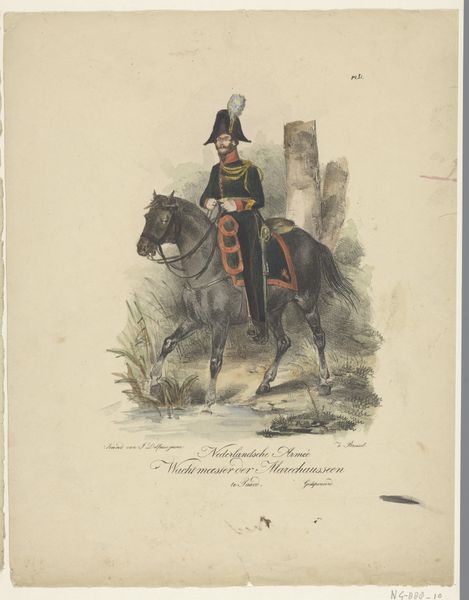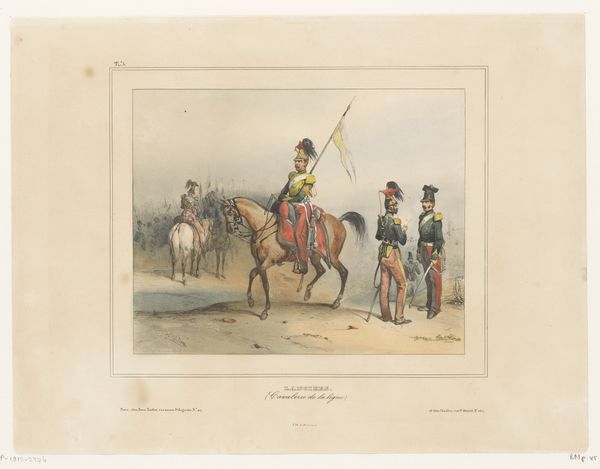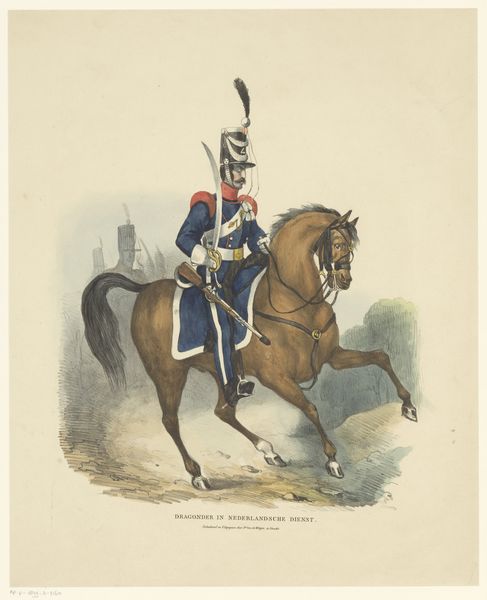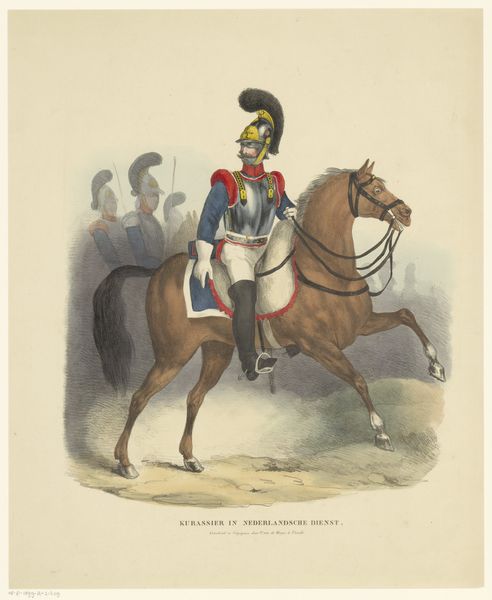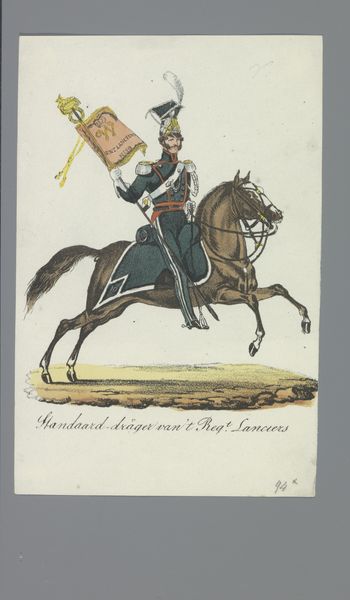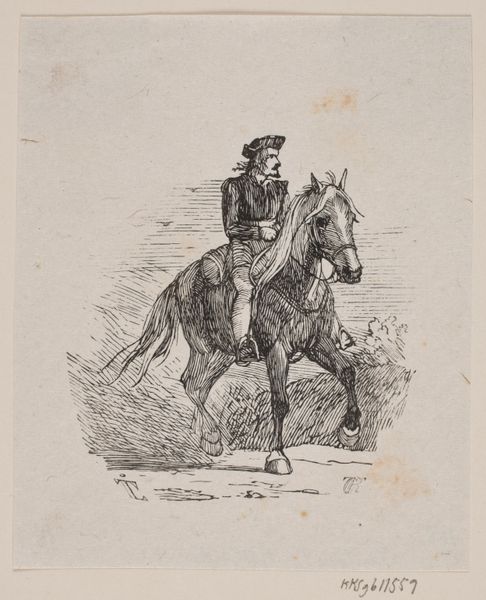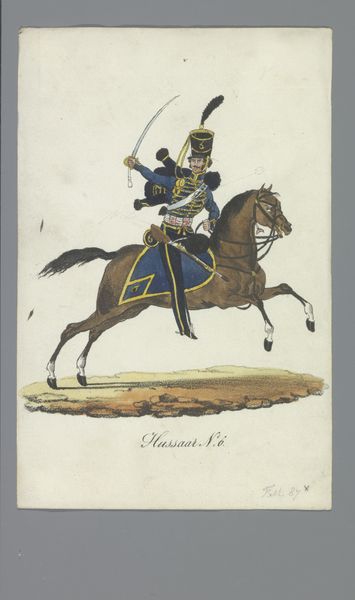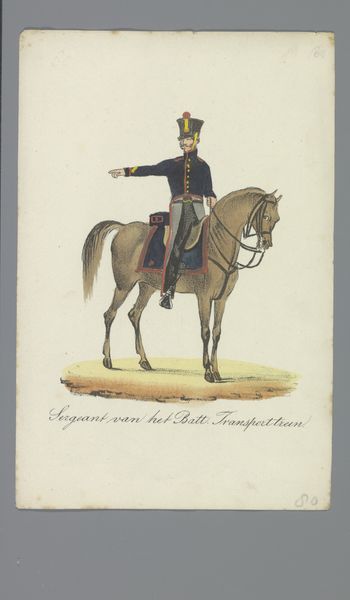
drawing, watercolor
#
portrait
#
drawing
#
watercolor
#
watercolour illustration
#
genre-painting
#
watercolor
Dimensions: height 185 mm, width 130 mm
Copyright: Rijks Museum: Open Domain
Editor: Here we have Richard Simkin's "British Military," created sometime between 1875 and 1925, using watercolor and drawing. It depicts a soldier on horseback, followed by several others. What strikes me is the detail of the uniform; it looks almost theatrical. What are your thoughts on it? Curator: For me, it's all about understanding how this image functions as a product of its time. Consider the materials: watercolor, a readily available and relatively inexpensive medium, suggests mass production and consumption. This wasn't intended as a high art object, but more likely as a widely disseminated image, perhaps a print in a periodical or part of a series documenting military uniforms. Editor: So, its value lies not in its uniqueness but in its role as a reproduced image? Curator: Precisely. Think about the social context: late 19th century Britain, an era of empire, of widespread interest and pride in the military. Simkin, by depicting this soldier and his regiment, is participating in the manufacture of a national identity. He is essentially producing propaganda, designed for mass appeal and consumption. Notice the attention to the trappings of rank and status, all designed to glorify militarism. Editor: That’s an interesting point. I hadn’t considered the possible political dimension in something that seems quite decorative. Curator: The “decorative” IS the point, isn't it? The artistic process is intrinsically linked to broader social, political and economic systems of the time. It asks us to question the intent of such meticulous production and its place in promoting consumerism of militaristic image. Editor: I see it now! So, analyzing the medium, the technique, and its intended audience gives us a much deeper insight into the picture and its impact. Thank you! Curator: Absolutely! Focusing on materiality can often reveal so much about art's role in shaping our understanding of history.
Comments
No comments
Be the first to comment and join the conversation on the ultimate creative platform.

